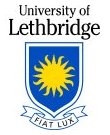Math 1410, Spring 2020
Introduction and welcome
January 7, 2020
| Sean Fitzpatrick |
|---|
| University of Lethbridge |
 |
Resources
Course website and outline
Everything is on Moodle.
The course is also on my website.
There is also a PDF version if you want to print it.
Online homework
Online homework provided via our WeBWorK server.
This is free to students. Access is via Moodle (only).
You can start as soon as a homework set opens.
Progress is saved automatically.
You don't have to do it all at once.
Textbook
Our textbook is an open education resource.
It has an open license that lets you do what you want with it.
You can download the PDF from Moodle, or my website.
The bookstore will print it for about $37, or you can print it yourself.
Forum
I use Piazza as an online discussion forum.
You are not required to sign up: this is a commercial service hosted in the USA.
If you do use it, you can use the link on Moodle to sign up and log in.
Tutorials
Tutorials are an integral part of the course, and they count toward your grade.
Every week you'll have an assignment to complete in class.
Grading is primarily for feedback on your math (and your writing).
If you make mistakes on the first attempt you'll have an opportunity to correct them.
The real number system
Real numbers
Almost everything is done in terms of the real numbers (Except for a brief foray into the complex numbers).
The set of all real numbers is typically denoted \(\R\text{.}\)
Real numbers include the natural numbers, integers, rational numbers, and irrational numbers.
They're harder to define than you might think — but we can tell you about their properties.
Properties of real numbers
For any real numbers \(x,y,z\text{:}\)
- \(x+y\) is also a real number.
- \(\displaystyle x+y=y+x\)
- \(\displaystyle x+(y+z)=(x+y)+z\)
- We have a special element \(0\) such that \(x+0=0+x=x\)
- We have negatives \(-x\) such that \(x+(-x)=0\text{.}\)
- \(xy\) is also a real number.
- \(\displaystyle xy=yx\)
- \(\displaystyle x(yz)=(xy)z\)
- We have a special element \(1\) such that \(1x=x\)
- If \(x\neq 0\) we have an inverse \(\dfrac1x\) such that \(x\cdot \dfrac1x = 1\text{.}\)
Rational numbers
Most of the time, we'll acutally be working in terms of rational numbers (i.e. fractions). Remember that:
To add or subtract fractions, we need a common denominator.
To multiply fractions, simply multiply numerators and denominators.
Dividing by a fraction is the same as multplying by its reciprocal. (For a nonzero fraction \(\frac{a}{b}\text{,}\) the inverse \(\frac{1}{a/b}\) is \(\frac{b}{a}\text{.}\))
Radicals
In Math 1410, the only radicals we need are square roots. (These show up as distances, via the Pythagorean theorem, and therefore as lengths of vectors.)
Reminder: the equation \(b^2=a\) has two solutions, if \(a \gt 0\text{:}\) \(b=\sqrt{a}\text{,}\) and \(b=-\sqrt{a}\text{.}\) But the square root \(\sqrt{a}\) always means positive square root.
Caution: it's true that \(\displaystyle\sqrt{ab}=\sqrt{a}\sqrt{b}\) for \(a,b\geq 0\text{.}\) But it's almost always the case that \(\sqrt{a+b}\neq \sqrt{a}+\sqrt{b}\text{.}\) (Try to find an example where it is!)